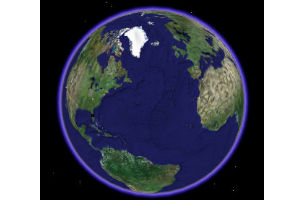
While most of us rely on Google Earth for checking out on holiday destinations, scientists have shown it can reveal a lot about the behaviour of marine life.
University of Technology-Sydney (UTS) marine biologist Elizabeth Madin, along with colleagues, used Google Earth satellite images to observe the indirect effects of the interface between predators and prey in the lagoon habitat at Heron island on Australia's Great Barrier Reef.
The results have revealed distinct patterns of grazing halos -- rings of bare sand devoid of seaweed -- within the algal beds surrounding isolated groups of coral, reports the inaugural issue of the journal Nature Scientific Reports.
Grazing halos have been attributed by previous researchers to fish and urchin herbivory (seaweed feeding). These creatures are thought to shelter from predators within reefs and then make foraging expeditions radiating outwards, according to a University of Technology release.
"To our knowledge, this is the first time anyone has used freely-available Google Earth images to identify these features, and then actually tested them on the ground to confirm that we're seeing exactly what we think we're seeing from the satellite images," Elizabeth Madin said.
"This is significant because it could potentially lead to the development of a conservation tool which is both rapid and inexpensive."
University of Technology-Sydney (UTS) marine biologist Elizabeth Madin, along with colleagues, used Google Earth satellite images to observe the indirect effects of the interface between predators and prey in the lagoon habitat at Heron island on Australia's Great Barrier Reef.
The results have revealed distinct patterns of grazing halos -- rings of bare sand devoid of seaweed -- within the algal beds surrounding isolated groups of coral, reports the inaugural issue of the journal Nature Scientific Reports.
Grazing halos have been attributed by previous researchers to fish and urchin herbivory (seaweed feeding). These creatures are thought to shelter from predators within reefs and then make foraging expeditions radiating outwards, according to a University of Technology release.
"To our knowledge, this is the first time anyone has used freely-available Google Earth images to identify these features, and then actually tested them on the ground to confirm that we're seeing exactly what we think we're seeing from the satellite images," Elizabeth Madin said.
"This is significant because it could potentially lead to the development of a conservation tool which is both rapid and inexpensive."


No comments:
Post a Comment